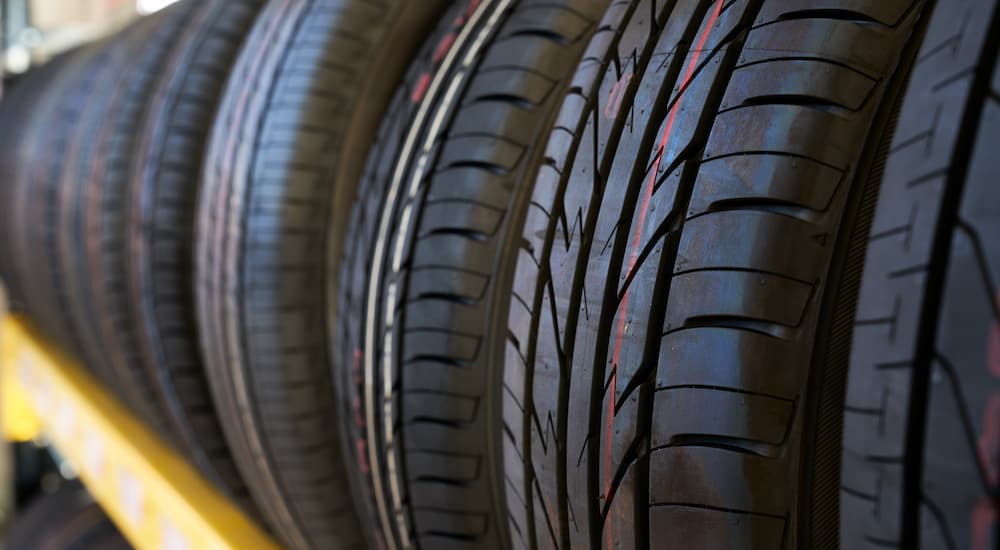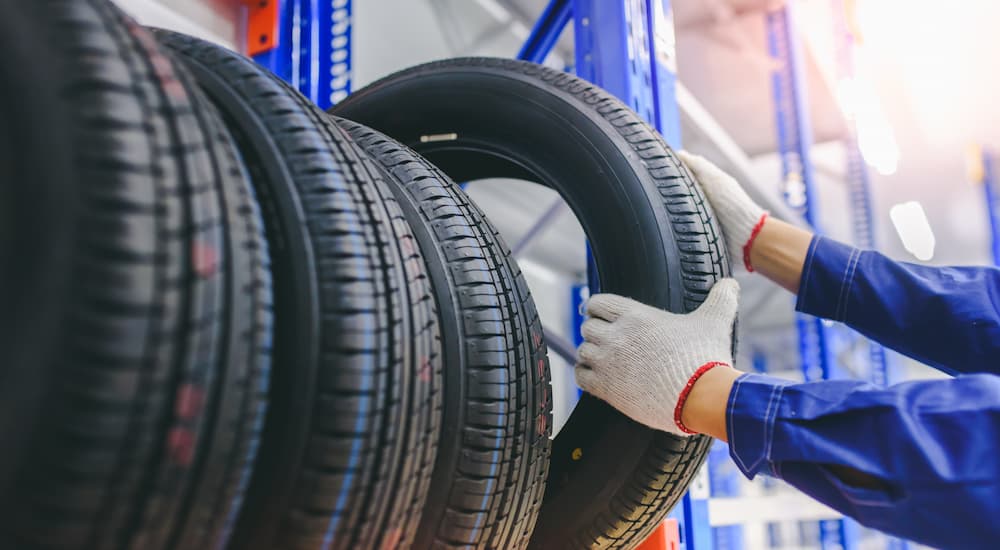When hitting up your local dealership for a new ride, the number of options can be thrilling and overwhelming. Even a car expert can grow exhausted cycling through the different trims and accessories, trying to decide what’s worth adding on, and balancing taste and economics. A classic conundrum is the choice between performance tires and regular tires. The difference can seem confusing at first. Surely, tires are tires, right? In reality, regular tires work well enough for the average driver, but performance tires provide more traction and work well at higher speeds. That doesn’t mean that performance tires are automatically for you, though, as there are some limitations on when and where they work well.
When looking for performance tires near me, I keep economics and expectations in mind. If I plan to hit a local autocross or track day, or I see myself attacking twisty roads at a spirited pace, then performance tires are without a doubt the way I’m going. But there are also some downsides I have to consider. Performance tires tend to reduce fuel economy. They also do not work well in cold weather, so I will have to switch them out if I live in a location with rough winters. Let’s dive into how I might decide whether I’m going with performance tires or regular tires. You may be surprised at some of the upsides and downsides.

Regular Tires: A Deeper Look
Regular tires, sometimes referred to as standard tires or all-season tires, can receive a bad rap. Most vehicles come equipped with standard tires, so unless you have already been choosing performance tires in the past, you have been driving on standard tires. No doubt, they have gotten the job done. Perhaps you’ve had to replace one or two, but they get you where you’re going, which for many people is all they need.
These tires have a moderate tread depth, which means they can handle most weather conditions. (Extreme winter conditions can pose a problem, but that is true for the majority of tires.) Regular tires are not designed with a specific condition in mind. Instead, they aim to perform in all weather conditions. This means they don’t wildly excel in any particular circumstance, but it does mean they do not need to be changed out depending on the season. In other words, regular tires don’t have a specialty. For many, that’s fine. They want tires that are reliable in all circumstances, so they do not have to think about changing tires depending on the time of year.
The cost remains manageable, too. Regular tires provide better fuel economy than performance tires and usually cost less to buy. They also tend to last longer, although your driving style dictates the length of your tire life, too.
If you are someone who is primarily just commuting or dropping the kids off at school, with the occasional summer trip thrown in when life allows, then regular tires will do just fine. Performance tires may not be to your benefit, and the extra cost is likely not worth it to you. But if you’re into speed and expect to brake short distances, then performance tires begin to look a lot better, especially if you live in a warm climate.
Performance Tires: The Lowdown
Someone who sticks to the speed limit during their commute and otherwise doesn’t drive much will probably give these a pass. For anyone who views their car as a significant part of their lifestyle, though, it’s a very different story. Enthusiast drivers who like to push the pedal to the metal more often tend to gravitate toward performance tires.
The biggest selling point of performance tires is their ability to handle higher speeds. This does not mean that someone has to be into drag racing in order for performance tires to pay off. There are plenty of locations where highway speed limits top off in the 70s or even 80s. Performance tires will feel secure and planted to the road even at these higher speeds. When zipping around tight corners, you’ll discover that performance tires offer superior traction and control, a sensation you may not get with regular tires. This sense of control comes from the tires’ shorter tread depth, sidewall height, and stiffer construction compared to regular tires. Combined with an increased width, the tires offer more road contact, providing that increased sense of control.
If you feel the need for speed, performance tires will likely be the right choice for you, particularly in temperate climates. However, performance tires can become more problematic in cold weather conditions. If you live in a locale with rough winters, you will want to switch your performance tires out for regular or winter tires when the seasons begin to change. Research shows that once temperatures fall below 45 degrees, performance tires do not grip the road as well as regular tires. They do, however, provide great traction in wet conditions. You are less likely to hydroplane on performance tires than standard tires, although nothing other than safe driving can guarantee it will never occur.
Two other downsides are lifespan and cost. Performance tires, due to their enhanced grip and softer rubber compound, wear down faster than regular tires and don’t last as long. You will have to watch your tread depth and replace them more often than regular tires. Performance tires cost more, too, so do not be surprised if you have to shell out a bit more for them. In addition, fuel efficiency takes a hit with performance tires. If keeping costs low at the pump is a high priority, then performance tires may not be the route for you.

So, Which Type is Right for Me?
If you are not a driving enthusiast and want tires you can rely on in most weather conditions, then choose the regular tires that come with your vehicle. This becomes doubly true if you live in a locale that has steady wintry conditions. Of course, you can also buy higher-end regular tires if you are not happy with the tires that came with your car.
If you want better control and higher speed capabilities, consider performance tires. If performance is your priority, then the trade-offs are worth it. Zooming down the highways and twisty back roads will be more fun with performance tires, and you will sit behind the wheel with a better sense of control.
As with so many elements of driving, your personal circumstances dictate which tires will work best for you. Now you have a better sense of which type of tire goes well with your lifestyle. The next time you get behind your wheel, you’ll be more informed about the capabilities of the tires you’re using, leading to a less stressful journey.

